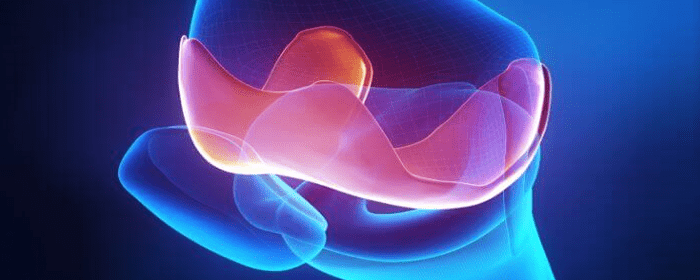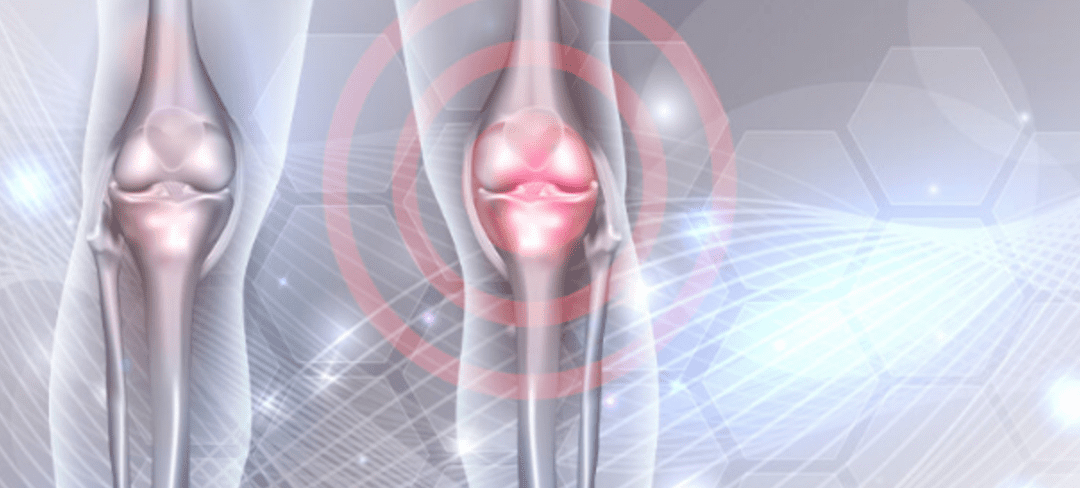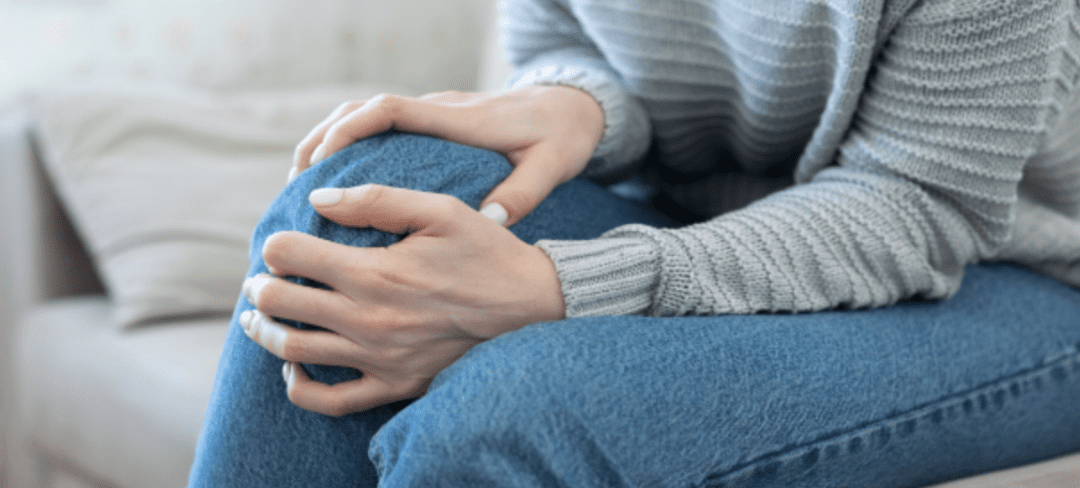
by admin | Jan 31, 2025 | Athletic Injury, Degenerative Disc Disease, Mesenchymal Stem Cells, Stem Cell Research, Stem Cell Therapy
Back pain is the most common cause of disability worldwide, impacting people of all ages and socioeconomic backgrounds. In North America, it is one of the top reasons people miss work and visit doctors. Studies show that at least 80% of Americans will experience low back pain at some point in their lives, making it a major contributor to healthcare costs and lost income, amounting to over $50 billion each year. Although various factors can cause back pain, most cases are mechanical rather than due to an underlying disease. One of the main sources of chronic back pain is the degeneration of intervertebral discs, which can lead to pain in the lower back and neck. Despite its prevalence, there is no standard treatment that effectively restores the normal function of these degenerated discs.
Understanding Disc Degeneration and Back Pain
Degenerative disc disease is one of the most significant contributors to chronic low back pain. As intervertebral discs age or become damaged, they lose their ability to cushion the spine, causing pain and reduced mobility. Degeneration can occur naturally due to aging, but other factors like injury or genetic predisposition can also accelerate the process. While imaging tests such as MRIs can identify disc degeneration, they don’t always pinpoint the exact cause of the pain. This makes treating degenerative disc disease challenging, as doctors struggle to find therapies that not only alleviate pain but also restore disc health.
Emerging Stem Cell Therapies for Back Pain
Recently, regenerative medicine, particularly stem cell therapy, has gained attention as a potential treatment for degenerative disc disease. Stem cells have the ability to transform into different types of cells, making them suitable for repairing damaged tissues. In theory, injecting stem cells into degenerated discs could help regenerate disc tissue and reduce pain.
Overview of Clinical Studies
Several clinical studies have examined the potential of stem cell therapies for treating degenerative disc disease, with mixed results. The types of stem cells studied include:
- Autologous mesenchymal stem cells (MSCs): These are derived from a patient’s own body, often from bone marrow or fat tissue. Some studies reported a reduction in pain and improvement in quality of life following treatment with MSCs. However, results were inconsistent, and improvements did not always correspond to measurable changes in the disc’s structure.
- Allogenic stem cells: These are stem cells from donors’ umbilical cord tissue. Research on allogenic stem cells is still limited, with few studies showing significant long-term benefits.
- Chondrocytes: These cells, which produce cartilage, have also been used in some studies to promote disc regeneration. However, there is limited evidence supporting their use, and more research is needed.
Overall, the studies reviewed had varying degrees of success, with some patients experiencing significant pain relief and others seeing little to no improvement. Many studies lacked control groups or were not randomized, making it difficult to draw definitive conclusions. The most common outcomes measured were pain scores and functional improvements, but there was no clear evidence that stem cell therapy restored the physical structure of degenerated discs.
How Stem Cells Might Work
There are several theories about how stem cells could help regenerate damaged discs. One possibility is that stem cells differentiate into the type of cells needed to repair the disc, such as cells that produce cartilage or other supportive tissues. Another theory is that stem cells create a supportive environment that encourages the body’s own repair mechanisms. For example, animal studies have shown that stem cells can increase the production of molecules that help repair and strengthen disc tissue.
The Future of Stem Cell Therapy for Back Pain
Soufi et al. report that stem cell therapy remains a promising area of research for treating degenerative disc disease. Ongoing clinical trials aim to establish the safety and effectiveness of these treatments in humans, and if successful, could pave the way for a new approach to managing chronic back pain. For stem cell therapy to become a standard treatment, more studies are needed to identify which patients are most likely to benefit and to optimize treatment protocols, including the type and dosage of stem cells.
Researchers are also exploring the use of tissue-engineering technologies and biomaterials to enhance the effectiveness of stem cell therapies. Combining stem cells with supportive scaffolds could improve the chances of successful disc regeneration and provide a more stable environment for cell growth.
The Potential of Stem Cell Therapy for Degenerative Disc Disease and Back Pain
Back pain, particularly when related to degenerative disc disease, is a significant health issue with limited effective treatment options. Stem cell therapy represents a new frontier in regenerative medicine, with the potential to offer relief to patients who have not responded to traditional therapies.
Source: Soufi, K.H.; Castillo, J.A.; Rogdriguez, F.Y.; DeMesa, C.J.; Ebinu, J.O. Potential Role for Stem Cell Regenerative Therapy as a Treatment for Degenerative Disc Disease and Low Back Pain: A Systematic Review. Int. J. Mol. Sci. 2023, 24, 8893. https://doi.org/10.3390/ijms24108893

by admin | Nov 9, 2023 | Athletic Injury, Mesenchymal Stem Cells, Regenerative Medicine, Stem Cell Research, Stem Cell Therapy
Articular cartilage primarily consists of chondrocytes and extracellular matrix and has an essential role in the process of joint movement, including lubrication, shock absorption, and conduction. However, over time, damage to the articular cartilage caused by acute or repetitive trauma or disease of the joints – including osteoarthritis – often results in pain, lack of mobility, and reduced quality of life for an estimated 500 million people worldwide.
Current treatments to address articular cartilage defects include physiotherapy, medication, intra-articular injection, and intra-articular irrigation; none of these treatments are able to regenerate the new cartilage needed to correct the issue.
In recent years, mesenchymal stem cells (MSCs) have been found to be potential solutions for a number of diseases, including OA, specifically because of their ability to differentiate and produce a variety of cells. MSCs have also been found to be safe for use in humans and have demonstrated the ability to improve clinical symptoms such as pain, disability, and physical function.
Additionally, hyaluronic acid (HA) has demonstrated itself to be an important component of the synovial fluid by protecting joint cartilage by providing lubrication and acting as a shock absorber. However, in the presence of OA, HA concentration decreases and results in increased aggravation and joint damage to cartilage. Like MSCs, clinical studies have also demonstrated HA’s ability to relieve pain in patients with OA.
In this study, Li et al, investigate the therapeutic effects of bone marrow mesenchymal stem cells (BMSCs) combined with HA on articular cartilage repairs.
Specifically, 24 healthy canines were operated on to induce cartilage defect model before being randomly divided into 3 groups; each of these groups received a different treatment: bone marrow mesenchymal stem cells (MBSCs) plus HA, HA alone, or saline. After 28 weeks, Li et al. found that the canines treated with BMSCs plus HA (BMSC-HA) showed significant improvement in cartilage defects compared to those receiving just HA or just saline.
The authors also found that while BMSCs-HA demonstrated the most significant improvement in cartilage defect, treatment with HA alone also demonstrated improvements when compared to those receiving saline alone.
Li et al. also identified a number of important limitations of this study, including the limited level of cells and proteins; the repair of cartilage defects in this study was a dynamic process that limited the study to the terminal point of repair; and that this was a preliminary and non-blinded study, which could have affected the evaluation of ICRS macroscopic and histological score. Considering this, the authors call for further blinded and basic experiments as a way to further improve understanding.
As a result of this study, Li et al. concluded that both BMSCs-HA and HA alone could significantly promote new cartilage formation, with BMSCs-HA demonstrating a better way to repair cartilage defects in a canine model.
Source: “Mesenchymal Stem Cells in Combination with Hyaluronic Acid for ….” 2 Jul. 2018, https://www.ncbi.nlm.nih.gov/pmc/articles/PMC6028658/.

by admin | Sep 20, 2023 | Athletic Injury, Osteoarthritis, Pain Management
Currently, 1 in every 4 adults suffer from chronic knee pain; this represents a 65% increase over the last 20 years. While knee pain can be caused by several causes, including meniscus tears, tendinosis, sprains, rheumatoid arthritis, and lupus, osteoarthritis (OA) remains the most common contributor to this condition.
In this study, Lee and Padgett evaluate the use of the peptides BPC157 and thymosin-beta-4 (TB4) for the treatment of knee pain. Specifically, as part of this study, 17 patients received peptide therapy consisting of BPC157 or a combination of BPC157 and TB4 injections for their knee pain.
It is estimated that the human body has nearly 300,000 peptides. These peptides consist of chains of amino acids that range from 2 to 100 amino acids in length. One specific peptide, BPC157, when isolated, has demonstrated restorative properties that have helped in the repair of tendons, ligaments, muscles, nerves, and bone fractures. BPC157 has also been found to promote recovery from traumatic brain injury (TBI), reduce blood clots, and protect the liver.
Because of its reported acceleration of recovery from ruptured tendons, BPC157 has also become a favored therapeutic option by athletes looking to speed up the healing of their injuries. Prior to this study, no study using BPC157 in humans has been published, nor has this peptide received US Food and Drug Administration (FDA) approval in the United States.
TB4 is FDA-approved and a naturally occurring peptide that originates in the thymus gland. TB4 possesses a range of healing and regenerative properties, including accelerating recovery from skin wounds, TBI, stroke, and multiple sclerosis. TB4 has also been shown to reduce inflammatory markers and pain.
The patients involved in this study either received only an intra-articular injection of BPC157 or a combination of both BPC157 and TB4 injections.
As a follow-up, and as part of this retrospective study, the author followed up with patients between 6 months and 1 year after receiving peptide injections in their knee. Of those receiving only the intra-articular injection of BPC157, 91.6% reported significant improvements in knee pain while 75% of patients who received both peptides showed significant improvement.
While treating knee pain with BPC157 and TB4 has demonstrated potential for future therapeutic options, the author calls for additional larger studies to better understand improvements in structural changes and increased collagen production in patients with OA-induced knee pain.
Lee concludes that this retrospective study demonstrates that BPC157 has been shown to help reduce knee pain and have prolonged effects lasting over six months, a significant benefit when compared to the documented short-lived results of steroid treatment. Source: “Intra-Articular Injection of BPC 157 for Multiple Types of Knee Pain.” https://pubmed.ncbi.nlm.nih.gov/34324435/.

by Stemedix | Sep 5, 2023 | Athletic Injury
Whether you are a dedicated athlete or simply enjoy sports in your spare time, the possibility of sustaining an injury is always present due to the physical stress and contact of many types of sports.
From a sprained ankle to a broken arm, sports injuries range in severity, and all of them can lead to lasting symptoms if not properly addressed. This is why having a quality sports injury doctor close to your home is so important.
A sports injury doctor is any physician who works with injuries sustained from athletic activity.
Fractures, breaks, sprains, torn ligaments, and dislocations are all common types of injuries that can occur from playing sports or exercising. A top-quality sports injury doctor can diagnose the type of injury you have and design a customized treatment plan that gets you on the path to healing.
Who Is Considered a Sports Injury Doctor?
Something many people don’t realize is that many different types of doctors can treat an athletic injury. The following are just a few specialists who can address sports-related injuries.
General Practitioner
While your family doctor may not technically be considered to be a sports injury doctor, they are a necessary step in the healing process. Your general physician can provide an initial assessment of your injury and determine what type of specialist will provide the most fitting treatment.
Physical Therapists
One of the most effective ways to address an athletic injury is through physical therapy. Physical therapists use non-invasive, non-surgical methods to strengthen your bones and muscles, helping you make a full recovery from many different types of injuries.
A physical therapist is ideal for sprains, dislocations, and healing after a broken bone. Your physical therapist will guide you through personalized stretches and exercises that aim to restore your proper muscle strength and tissue alignment.
Many people see a physical therapist for an extended period at regular intervals, such as one to two times a week for six months. Your duration of treatment will depend on the severity of your injury.
Orthopedists
Another specialist who frequently addresses sports injuries is an orthopedist. They work with conditions of the bones and muscles. These doctors can perform a wide variety of diagnostics to determine the source of your symptoms and develop a thorough treatment plan. Orthopedists treat almost any area of the body, but they often work with the arms and legs.
For severe breaks, you may need to see an orthopedic surgeon. These surgical specialists can provide the proper treatment to help your bone heal correctly after an athletic injury.
Podiatrists
If you injure your foot, toe, or ankle during athletic activity, you may need to see a podiatrist. They work specifically with conditions of the feet. These doctors can address broken toes, ankle sprains, and damaged tissues within the foot.
A podiatrist can also provide custom footwear, such as ankle bracing or shoe inserts, to help heal certain injuries.
Chiropractors
When you are looking for non-surgical intervention for certain types of sports injuries, you may want to see a chiropractor. Chiropractors provide manual adjustment of the bones in your arms, legs, and spinal column. They are a popular choice for spinal misalignment and dislocations.
Something important to consider when working with a chiropractor is the nature of your injury and the method of adjustment. Sometimes chiropractic treatment can do more harm than good. This harm happens when an adjustment is performed incorrectly or in the wrong spot, leading to exacerbated pain and discomfort.
You should be especially careful when treating neck injuries, as this can lead to nerve damage in the cervical spine.
Holistic Specialists
One type of specialist that may be overlooked when searching for sports injury treatment is a holistic medicine doctor. Holistic doctors specialize in natural approaches to a wide variety of health concerns, from chronic conditions to acute illnesses.
A holistic medicine specialist can use natural methods to address your athletic injuries without prescription medications or surgical intervention.
What to Consider When Choosing a Sports Injury Doctor
If you’re looking for a doctor to treat your athletic injuries, you will need to consider several factors in order to choose the best provider for your needs. These factors include everything from experience to location.
Relevant Experience
When looking for a doctor for your athletic injury, you will want to choose someone who has relevant experience. Your doctor should be qualified to treat the type of injury you have.
For example, a podiatrist only treats conditions of the foot, ankle, or toes. If you have an injury higher on the leg, such as a torn calf muscle or knee dislocation, an orthopedist is a better choice.
Services Offered
Another thing to consider when choosing a sports injury doctor is the services they can provide. Do they offer surgical procedures? Are their services strictly non-invasive? Do they use natural, holistic methods?
Your injury may require specific treatment to heal properly. You need to choose a doctor who can provide the best treatment possible to address your injury.
Office Location
One of the most important factors to consider when looking for a sports injury doctor is their location. You want to choose a doctor whose office is in your general area so that you don’t need to commute far for treatment.
Athletic injuries often require a series of multiple visits spread out over time. Having a doctor in your area will make your recovery process much more convenient.
Treating Sports Injuries
Are you looking for a top-quality sports medicine doctor near you? There are various ways to treat sports injuries, from physical therapy to chiropractic adjustments. Finding the right sports injury doctor can make the difference between chronic pain and proper healing.
Additionally, some people want more natural treatments for their sports injuries, including stem cell therapy or PRP injections.
If you injure yourself playing sports or exercising, speak with your general practitioner or other provider about what type of specialist is the best choice to meet your needs.

by Stemedix | Jun 19, 2023 | Mesenchymal Stem Cells, Athletic Injury
A very common question we get is ” How long does Stem Cell Therapy last for Knees? ” for those seeking this alternative treatment for the management of their knee pain. But first, we will discuss what can be behind the knee pain as a cause, who to seek a medical diagnosis, and what options a patient has.
What Can Cause Knee Pain?
Knee pain can have various causes, leading to discomfort and limitations in daily activities. One common cause is injuries, which can occur from sudden trauma or repetitive strain. Sprains, strains, ligament tears (like the anterior cruciate ligament or ACL tears), meniscus tears, fractures, or dislocations can result in knee pain.
Degenerative conditions like osteoarthritis often affect the knee joint. Over time, the protective cartilage on the ends of the bones wears down, causing pain, stiffness, and swelling. Rheumatoid arthritis, an autoimmune disease, can also lead to knee pain due to joint inflammation.
Tendinitis, characterized by inflammation or irritation of the tendons around the knee, is typically caused by overuse or repetitive stress. Bursitis, another inflammatory condition, occurs when the small fluid-filled sacs (bursae) between bones, tendons, and muscles become inflamed.
Patellofemoral pain syndrome refers to pain around or behind the kneecap and is often caused by overuse, muscle imbalances, or improper tracking of the kneecap. IT band syndrome, on the other hand, arises from irritation or inflammation of the IT band along the outer thigh and can cause outer knee pain.
Conditions such as gout, marked by the accumulation of uric acid crystals in the joints, can lead to sudden and severe knee pain, redness, and swelling. Infections, though rare, can also cause knee pain, with symptoms including warmth, redness, and swelling.
Additional factors contributing to knee pain include ligamentous or muscular strains, bone tumors, obesity, poor biomechanics, or referred pain from other parts of the body.
If you are experiencing persistent or worsening knee pain, it is crucial to consult with a healthcare professional for a proper diagnosis so to better help the treatment planning.
Who Do I See if I Have Knee Pain?
If you have knee pain, there are several healthcare professionals you can consult with for evaluation, diagnosis, and treatment. The appropriate healthcare provider may depend on your specific situation and the severity of your knee pain. Here are some specialists who commonly deal with knee-related issues:
Primary care physician (PCP): Your first step is often to see your primary care physician. They can assess your knee pain, perform a physical examination, and provide initial treatment or refer you to a specialist if needed.
Orthopedic specialist: Orthopedic doctors specialize in the musculoskeletal system and commonly treat knee pain and related conditions. They can diagnose the underlying cause of your knee pain, recommend imaging tests, if necessary (such as X-rays or MRI), and provide both nonsurgical and surgical treatment options.
Rheumatologist: If your knee pain is suspected to be related to inflammatory or autoimmune conditions like rheumatoid arthritis, a rheumatologist can provide expertise in diagnosing and managing such conditions.
Sports medicine specialist: These specialists focus on injuries and conditions related to sports and physical activity. If your knee pain is sports-related or if you have an active lifestyle, a sports medicine specialist can help with diagnosis, treatment, and rehabilitation.
Physical therapist: Physical therapists can be involved in the treatment of knee pain, especially for rehabilitation and strengthening exercises. They can provide exercises, stretches, and techniques to improve knee function and reduce pain.
Pain management specialist: If your knee pain is chronic and not easily managed with conventional treatments, a pain management specialist can provide additional options such as medications, injections, or other interventional procedures to alleviate pain.
Are There Alternative Medicine Treatments for Helping with Knee Pain?
Yes, there are alternative medicine treatments that some individuals may consider for helping with knee pain. These alternative approaches focus on holistic and natural methods to address pain and promote overall well-being. While they may not be suitable or effective for everyone, some people find them helpful as complementary or adjunct therapies. Here are a few alternative medicine treatments that are sometimes used for knee pain:
Acupuncture: This ancient Chinese practice involves the insertion of thin needles into specific points on the body. Acupuncture is believed to stimulate energy flow and promote pain relief and healing. Some people report reduced knee pain and improved function with acupuncture.
Herbal remedies: Certain herbs and botanicals are believed to have anti-inflammatory properties and can be used topically or taken orally to alleviate knee pain. Examples include turmeric, ginger, Boswellia, and willow bark. However, it’s essential to consult with a qualified herbalist or healthcare provider before using any herbal remedies, as they can interact with medications and have potential side effects.
Topical creams and ointments: Various topical preparations containing natural ingredients like arnica, menthol, capsaicin, or essential oils are available and can be applied to the knee to provide temporary relief from pain and inflammation.
Mind-body techniques: Practices such as meditation, mindfulness, yoga, and tai chi can help manage knee pain by promoting relaxation, reducing stress, improving flexibility, and enhancing body awareness. These techniques may also improve overall physical and mental well-being.
Physical therapies: Alternative physical therapies like chiropractic care, osteopathy, or naturopathy may incorporate manual techniques, stretching, manipulation, or mobilization to address knee pain. These approaches often aim to enhance joint mobility, improve alignment, and reduce pain.
Regenerative Medicine: Also known as stem cell therapy, this regenerative medicine utilizes mesenchymal stem cells (MSCs) for joint pain by promoting healing, repair, and regeneration of damaged joint tissues.
What is MSC Therapy for Knee Pain?
MSC (mesenchymal stem cell) therapy is a form of regenerative medicine that has gained attention as a potential treatment for knee pain and knee-related conditions. MSCs are multipotent cells that have the ability to differentiate into various cell types, including bone, cartilage, and fat cells. They also possess anti-inflammatory and immunomodulatory properties. Most people ask the question of ” How long does Stem Cell Therapy for knees last? ” With MSC Therapy for Knee Pain in mind.
The goal of MSC therapy is to promote tissue regeneration, reduce inflammation, and potentially slow down the progression of conditions such as osteoarthritis. By injecting MSCs into the knee joint, it is believed that the cells can stimulate the repair of damaged tissues, enhance cartilage regeneration, and modulate the immune response, thereby reducing pain and improving function.If you are considering MSC therapy for knee pain, it is essential to consult with a qualified healthcare professional who specializes in regenerative medicine. They can assess your specific situation, discuss the potential benefits and risks, and provide guidance on whether MSC therapy is appropriate for you as part of a comprehensive treatment plan. Looking to inquire further about how long does stem cell therapy last for knees, contact us at Stemedix today.

by Stemedix | Oct 31, 2022 | Regenerative Medicine, Athletic Injury
You might suffer from knee pain due to the strain of everyday activities, sports injuries, or accidents. Regardless of the cause, knee pain often worsens over time and can become so debilitating that walking or standing becomes painful. Here we will discuss how regenerative medicine can help damaged knees.
Where Does Knee Damage Occur?
Knee damage can result from continuous stress on the joint or from an injury. Overuse due to certain activities can cause tendinitis (inflammation in the tendons). Excess pressure or stress on the joint can lead to osteoarthritis, a condition in which the joint’s cartilage wears away.
Injuries that can damage the knee include sprained ligaments, strained muscles, or torn cartilage. Any injury to the knee can cause pain, swelling, stiffness, and difficulty walking. If you experience repeated knee injuries, you may be more likely to develop osteoarthritis.
What Is Regenerative Medicine?
Regenerative medicine, also known as stem cell therapy, harnesses the unique qualities of stem cells to repair and restore damaged tissue in the body.
Some cells in the body, like skin cells, constantly divide to create new cells, a process called mitosis. When those cells divide, they make two new, identical cells called daughter cells. Other cells in the body, such as neurons or certain heart cells, never divide at all.
Stem cells stand out as the only cells in the body capable of dividing to create various specialized cells, a process called differentiating. Since many specialized cells do not divide, stem cells are essential to the body’s health.
During stem cell therapy, stem cells are extracted from a patient’s bone marrow or body fat. They are then administered into injured areas, triggering tissue to repair and restore itself. The ability of stem cells to divide into other types of cells gives them impressive healing abilities.
How Can Stem Cell Therapy Help Repair Damaged Knees?
Currently, physicians are using stem cell therapy to promote healing in knee injuries, injecting the cells into damaged joints to accelerate the body’s repair process and foster a complete recovery.
Patients with osteoarthritis experience most of their pain due to a lack of cartilage. Irritation and inflammation can occur when the bones, muscles, and other joint tissues move without the cushioning effects of cartilage.
Stem cell treatments protect and heal the joint tissue affected by cartilage loss, keeping them from further affecting mobility and creating new knee issues, such as bone spurs.
Many patients are exploring the options of regenerative medicine to help manage their pain and inflammation, and in some cases, rebuild and repair damaged tissues. Find out how this new alternative medicine may help you. To learn more about how regenerative medicine can help damaged knees, contact a care coordinator at Stemedix today!







 St. Petersburg, Florida
St. Petersburg, Florida
